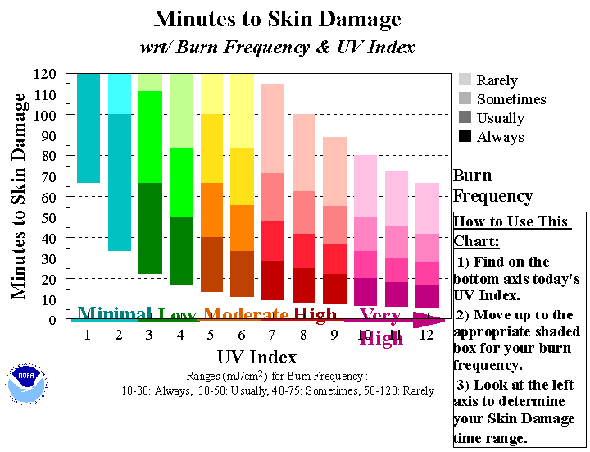As described in other sections of the UV information, the UV Index is a forecast of the probable intensity of skin damaging ultraviolet radiation reaching the surface during the solar noon hour (11:30-12:30 local standard time or 12:30-13:30 local daylight time). The greater the UV Index is the greater the amount of skin damaging UV radiation. How much UV radiation is needed to actually damage one's skin is dependant on several factors. But in general the darker one's skin is, (that is the more melanin one has in his/her skin) the longer (or the more UV radiation) it takes to cause erythema (skin reddening). Figure 1 shows a look up chart where by one can cross check his/her propensity to burn versus the UV Index. For those who always burn and never tan the times to burn are relatively short compared to those who almost always tan.
The
EPA has devised general guidelines as far as what to do to
protect oneself from overexposure to UV radiation. These are
shown in the table below.
| Exposure Category | UV Index | Protective Actions |
| Minimal | 0, 1, 2 | Apply skin protection factor (SPF) 15 sun screen. |
| Low | 3, 4 | SPF 15 & protective clothing (hat) |
| Moderate | 5, 6 | SPF 15, protective clothing, and UV-A&B sun glasses. |
| High | 7, 8, 9 | SPF 15, protective clothing, sun glasses and make attempts to avoid the sun between 10am to 4pm. |
| Very High | 10+ | SPF 15, protective clothing, sun glasses and avoid being in the sun between 10am to 4pm. |
Figure
1

Last Updated September 2, 1997 by Craig S. Long
Disclaimer and Reproduction Information: Information in NASD does not represent NIOSH policy. Information included in NASD appears by permission of the author and/or copyright holder. More